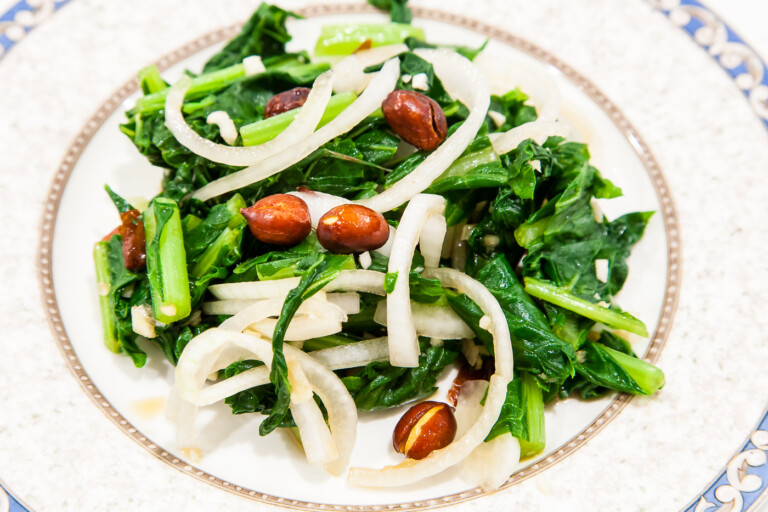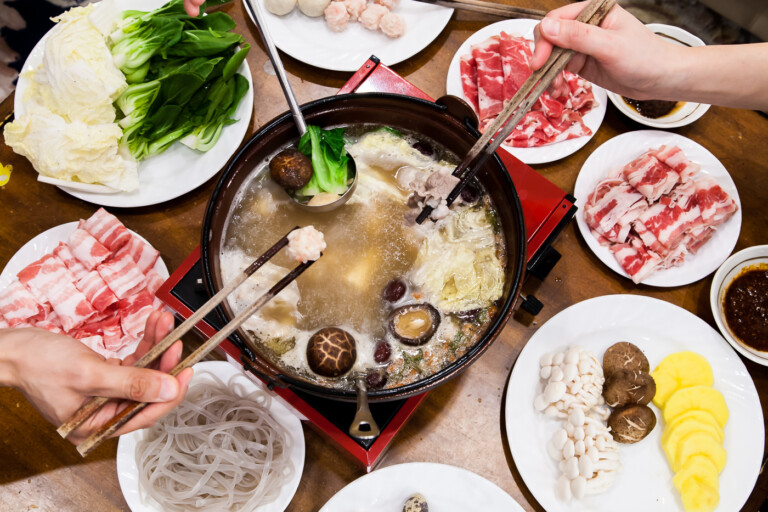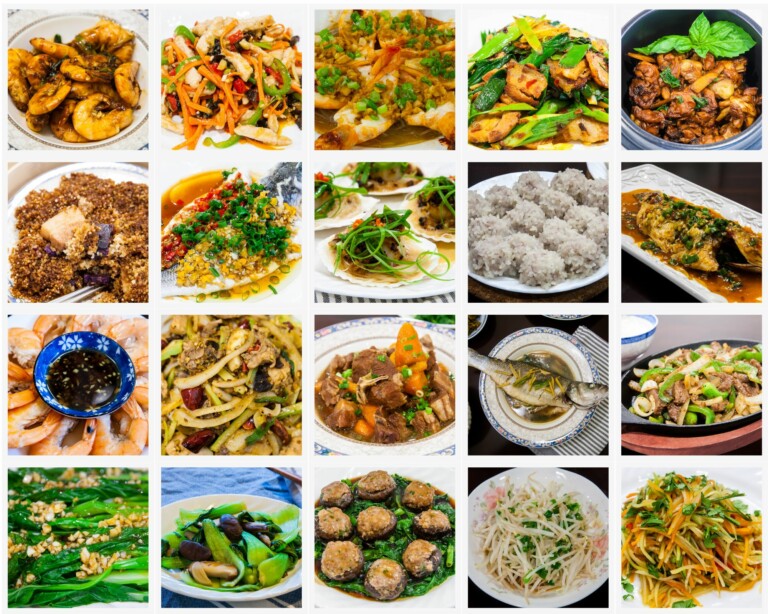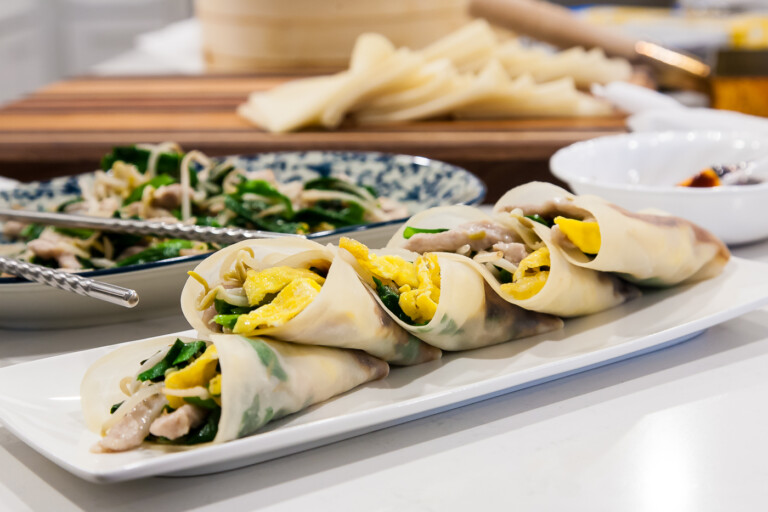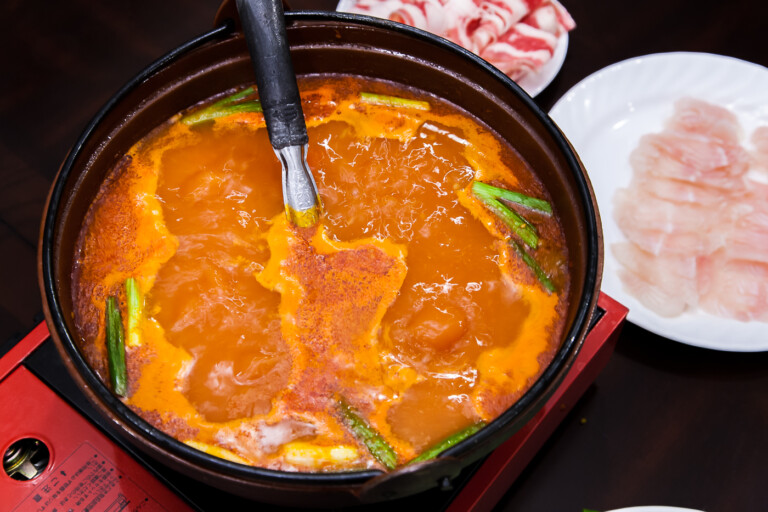
Tender Pork Julienne (炒肉丝 Chao Rousi)
July 10, 2021 Print
Pork julienne (you might also call it shredded pork, although the pork is chopped and not shredded) is one of the most basic and widely used recipes for Chinese home cooks. Due to its superior versatility, it can be added to most vegetables, giving the vegetable dish more flavor, umami, and texture. It can also be made into many meaty dishes with pork julienne as the central ingredient. For a regular Chinese household, dinners usually include some type of stir-fried vegetable with pork julienne. When making dinner, I will often prepare the pork julienne first, cooked to 70% to 80% doneness. I will then stir fry the vegetable and add the pork julienne at the end, stir frying them together for the last half a minute or so to finalize the dish. Pork julienne is so important, that my mother-in-law says it’s one of the most “basic” skills a home cook should have.
Even though pork julienne is one of the most basic recipes for Chinese cuisine, especially for home cooks, it is not the easiest to master. It does call for a few “tricks” to get the intended tenderness, umami, and texture. Pork cooks very quickly and requires frequent stirring and tossing to prevent burning and overcooking. The corn starch is also important because it not only seals in the moisture of the pork to retain its tenderness, but also adds a bit of QQ (springy or spongy) texture. If it’s not done correctly, pork julienne becomes dry and hard, which can completely ruin a dish.
If you’re short on time, you can use this time saving method my mother-in-law taught me. You just pre-cut the pork into julienne strips, place them in plastic wrap in half-pound portions, and store them in a freezer. That way, you only need to thaw one bundle of already-cut strips the night before. Because the pork is already cut, you don’t need to worry about cutting the pork when preparing your meal. With the pre-cutting method, you do need a little bit more patience when adding water—for some reason pork is less absorbent after being frozen. Unquestionably, fresh pork makes the best pork julienne, but pre-cutting and freezing the pork julienne definitely suits my busy schedule as a mom.

You can easily adapt this recipe to make pork slices by cutting the pork tenderloin into square or rectangular shapes instead of julienne strips.
Since pork julienne can be used in a variety of recipes, I will post some ideas that use it in the coming weeks. Stay tuned. For now, see the example below.

Gluten Free, Low Carb
Preparation Time: 25 minutes
Total Time: 30 minutes
Servings: 2-4 people
Ingredients:
- 1/2 lb (~225g) pork tenderloin1
- 1/2 teaspoon kosher salt (or 1/4 teaspoon table salt)2
- ~3 tablespoons water
- 1/2 teaspoon vegetable oil
- another 2 tablespoons vegetable oil
- 1 tablespoon corn starch

Preparation:
- Cut the pork tenderloin against the grain into rounds. Then stack a few rounds and cut them, with the grain, into julienne strips (no more than 0.4 inch or 1 cm thick). Put all the julienne strips in a mixing bowl.


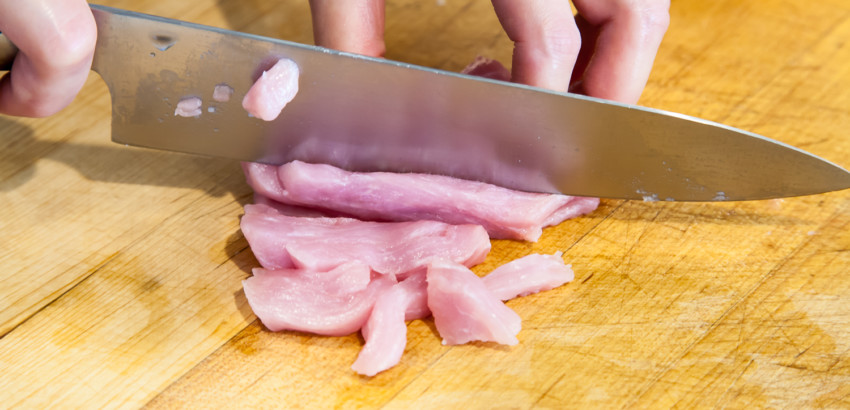
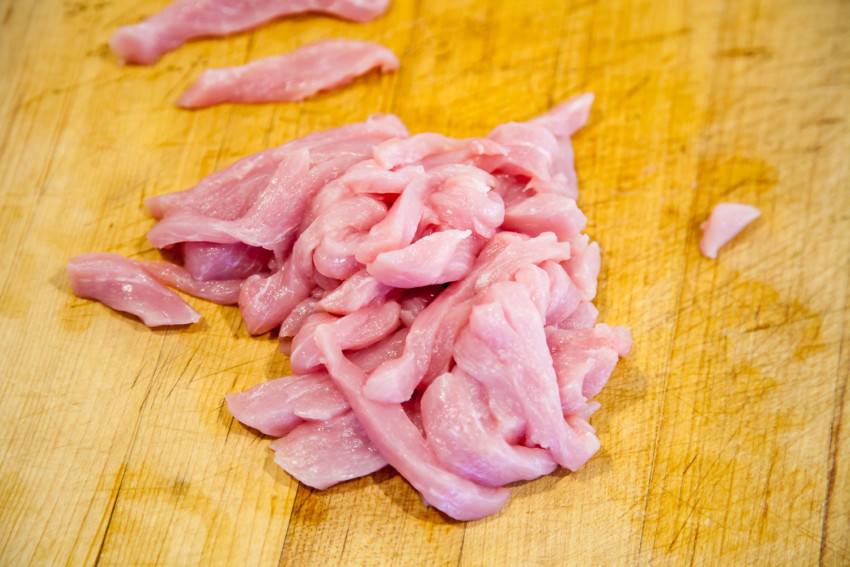
- Add the 1/2 teaspoon of kosher salt (or 1/4 teaspoon table salt) to the mixing bowl and mix thoroughly. Then slowly add the 3 tablespoons of water (add and mix 1 tablespoon of water at a time to allow the pork to absorb the water). Let the meat marinate for 15 minutes on the counter (stir once in between).





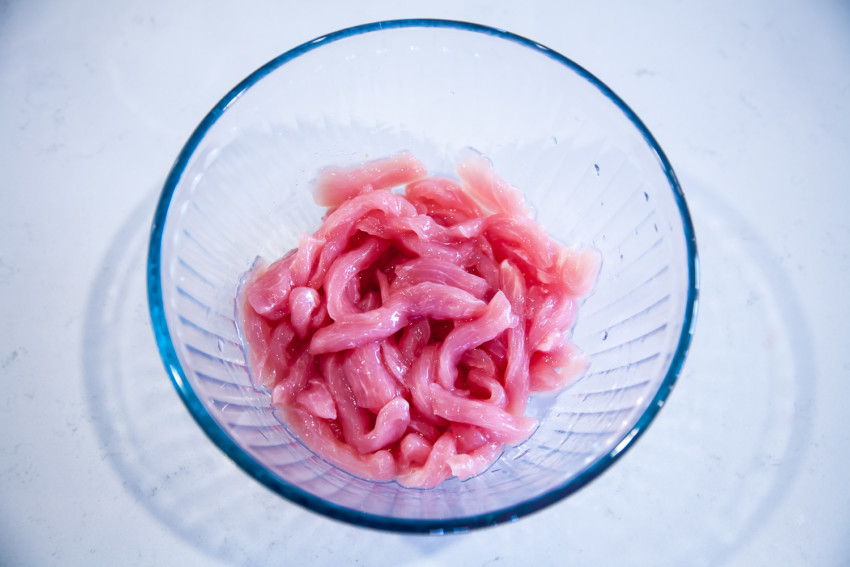
- When the meat has fully absorbed the water and feels sticky and bouncy to the touch (could be less or more than 15 minutes), add the 1/2 teaspoon of vegetable oil, blending well. Then add the 1 tablespoon of corn starch. Use either your hand or chopsticks to mix. The resulting pork julienne should have a sticky feel and easily form into a round ball.3


- Heat a well-seasoned skillet or nonstick pot under medium-high heat.4 When the skillet is getting hot, add the 2 tablespoons of vegetable oil. When the oil becomes warm to hot, about 15 seconds, add the pork julienne strips, and immediately start stirring and tossing. Keep an close eye on the pot as the meat cooks quickly. Continue frequent stirring and tossing and when the pork changes color from pink to a more whitish, but not yet fully-cooked color (about 70% to 80% done), take them out. The total amount of cooking time should only last about 2 to 3 minutes.
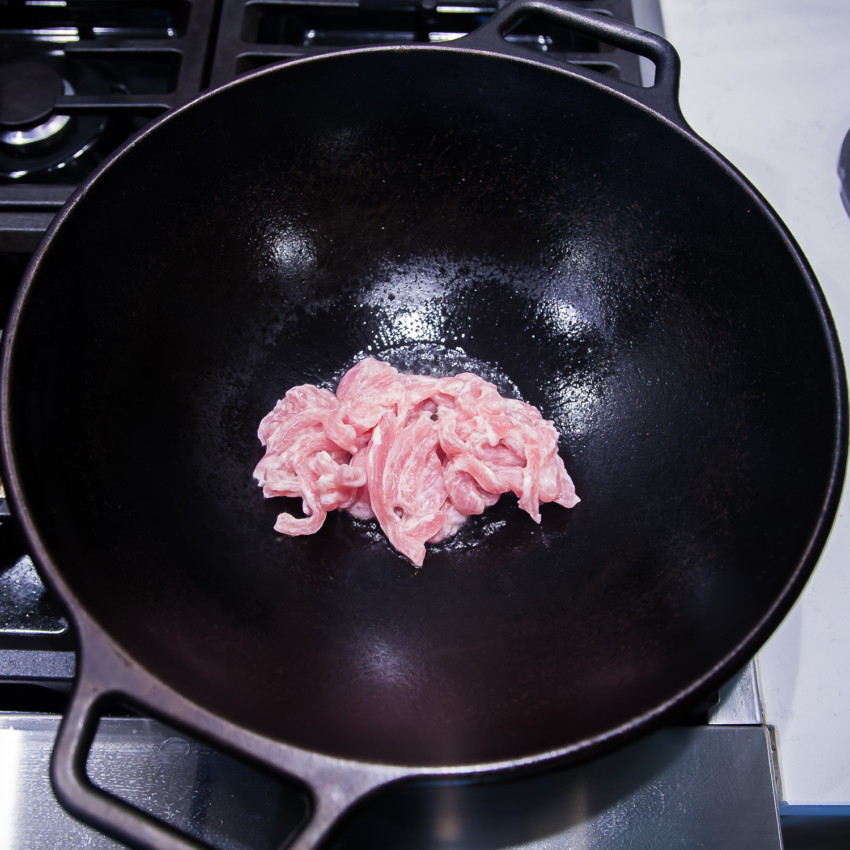



Bon Appétit
Notes:
- Pork tenderloin makes the best tender pork julienne. A similar method can be applied to chicken meat as well.
- Depending on what you cook, you might need to reduce the salt amount to 1/3 teaspoon of kosher salt. For example, you might do this if you plan to add more salt or another savory sauce when completing a dish.
- Make sure the pork fully absorbs the water before adding corn starch. As long as the total marinating time is at least 15 minutes (including the time with corn starch), it should be good to go. When mixing with corn starch, the marinade pork julienne should look relatively dry and sticky but still be moist (it definitely takes some trial and error to figure out the right consistency). If water is still visible after adding corn starch, wait until it gets absorbed by the pork.
- Due to the corn starch added to the pork, you will see some white residue sticking to your pot (unless you use a nonstick pot). The white stuff should come off easily if you immerse the pot in warm water for a few minutes.
As an Amazon Associate I earn from qualifying purchases.








